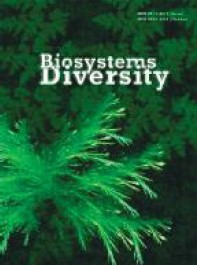Influence of air temperature and humidity on Stratiolaelaps scimitus (Acari, Mesostigmata) locomotor activity in a laboratory experiment
Influence of air temperature and humidity on Stratiolaelaps scimitus (Acari, Mesostigmata) locomotor activity in a laboratory experiment
Author(s): V. S. Moshkin, V. V. BrygadyrenkoSubject(s): Physical Geopgraphy, Environmental Geography
Published by: Дніпропетровський національний університет імені Олеся Гончара
Keywords: exploratory activity; migration activity; thermo-preferendum; hygro-preferendum; biological method of plant protection; zoophages; litter fauna;
Summary/Abstract: Stratiolaelaps scimitus (Womersley, 1956) (Acari, Mesostigmata, Laelapidae) is a predatory soil mite massively produced in laboratories in many countries of the world. The existing spheres of S. scimitus application vary in many parameters, especially temperature and relative humidity. In this article, we analyzed temperature and humidity appropriate for fastest spread of soil predatory mite S. scimitus. Mites should be released to a new environment in such a way that they would distribute in a greenhouse, garden or field as fast as they can (i.e. providing maximum migration activity of S. scimitus), on the one hand, and provide maximum efficient control of number of target phytophage species (i.e. providing maximum trophic activity), on the other hand. In our experiment, at 14 ºC temperature, most specimens of S. scimitus did not leave the migratory circle for 10 seconds. In 15–19 ºC range, only 14.7% of mites left the migratory circle, and their examined activity in 10 s was only 5–10 mm. In 20–24 ºC range, 27.5% of mites left the migratory circle, their migratory activity increased to 15–23 mm. In 25–33 ºC range, the moving activity increased even more, the mites left the migratory circle at the first opportunity that had (some even jumped off the circle to the experimental field), 95.8% of the mites left the circle in 10 s, their examined activity reached 25–60 mm in 10 seconds. Study of thermo- and hygro-preferences for various groups of invertebrates helps to better describe their ecological niche in multidimensional space of ecologic factors.
Journal: Biosystems Diversity
- Issue Year: 30/2022
- Issue No: 2
- Page Range: 191-197
- Page Count: 7
- Language: English

